Can You Vent a Bathroom Fan Into the Attic? Safety Facts & Tips
-

- Last updated:
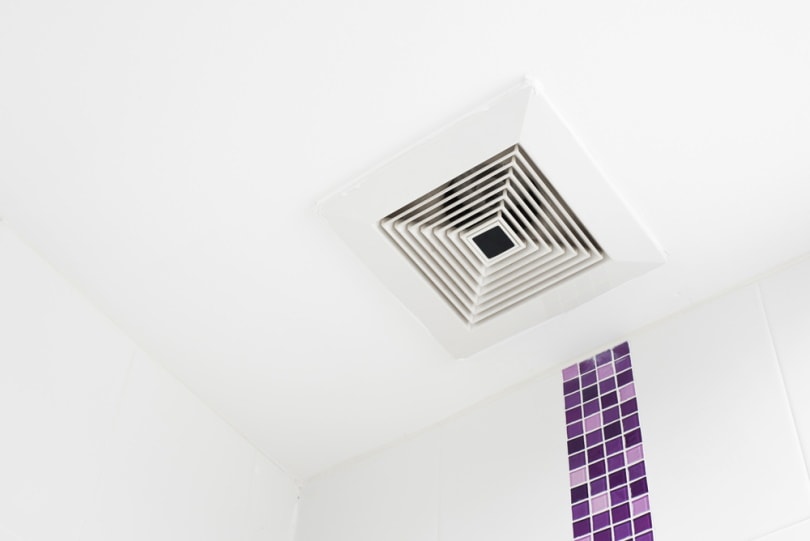
Whether building or purchasing a new home, one of the major concerns among homeowners is where the bathroom exhaust fan vents. While a bathroom fan can vent into the attic, it is not a good idea. Apart from going against most local building codes and regulations, it also promotes the growth of mold and mildew, leading to wood deterioration.
Moreover, chances are high that the moisture will lead to structural decay, and eventually, your roof might also collapse. If, for whatever reason, you live in a building where the bathroom fan vents into the attic, do not panic. There are correct methods of solving this issue.
This article will explore the various reasons why it is a bad idea to vent into the attic and the correct way of venting the bathroom fan into the attic. We will also explore factors you should consider before venting a bathroom fan into the attic. Read on to learn more.
Why You Shouldn’t Vent a Bathroom Fan Directly Into the Attic
1. Ventilation Concerns
One of the main reasons why experts deem it a bad idea to vent the bathroom fan into the attic is due to ventilation concerns. The attic is usually one of the least ventilated areas in any household. They are often closed off and feature temperatures that are different from the rest of your house. Even though you might not visit your attic as often, on the rare occasions that you do, you will notice the air is hot and humid.
When the air and moisture from your bathroom are released into the attic, condensation will occur, thus promoting the growth of mildew and mold. Some building contractors may argue that humid regions like Florida already have a lot of moisture content in the air, and thus, humidity shouldn’t be a concern. Additionally, they argue that it is best to direct the moist bathroom air to the attic because creating a bathroom vent on the roof is not only labor-intensive but would increase the chances of a leak.
While the jury is still out on this argument, it is best to adhere to your local building codes and direct bathroom vents to the exterior part of the house, preferably the roof. Moreover, the moist bathroom air trapped in your attic can easily blow back to the washroom and other areas of your house.

2. Building Codes and Regulations
In many parts of the world, the US included, it is illegal to vent a bathroom fan directly to your bathroom. If you did vent through the attic and a home inspector found you out, you might receive a notice of building violation. The violation notice essentially gives you a timeframe to redo the construction work and fix any issues discovered by the home inspector.
Failure to do so will prompt a fine, and if the issues endanger people’s lives, further action could be taken against you, depending on the country or state you reside.
3. Mold and Mildew
As you may know, the bathroom is the wettest place in your home. When the moisture-rich air is allowed to make its way into the attic, it will promote the development of pests and disease-causing organisms. If not nipped in the bud, mold will continue to grow and eventually will cause structural damage to your property, most likely the roof or insulation. Besides being very expensive to repair structural damage, mold, and mildew have several health implications when inhaled.
The Correct Way to Vent a Bathroom Fan Through Your Attic
Now that you know it is not recommended to vent the bathroom exhaust fan into the attic, where should one direct the moisture-rich bathroom air? According to the International Residential Code, you should only vent your interior exhaust air outside. In one of their quotes, they state the following:
“The air expelled by mechanical exhaust systems should only be discharged outdoors under Section M1504.3. Air should not be released into an attic, crawlspace, soffit, or ridge vent.”
However, this rule has an exception for older homes, more specifically those built in the 1960s. The best way to release moist bathroom air from your house to the outdoors is to vent either through the roof, a gable wall, or a soffit. Whichever method you choose, ensure the vent directly goes outside and is protected with a vent hood cover.
1. Venting Through Soffit
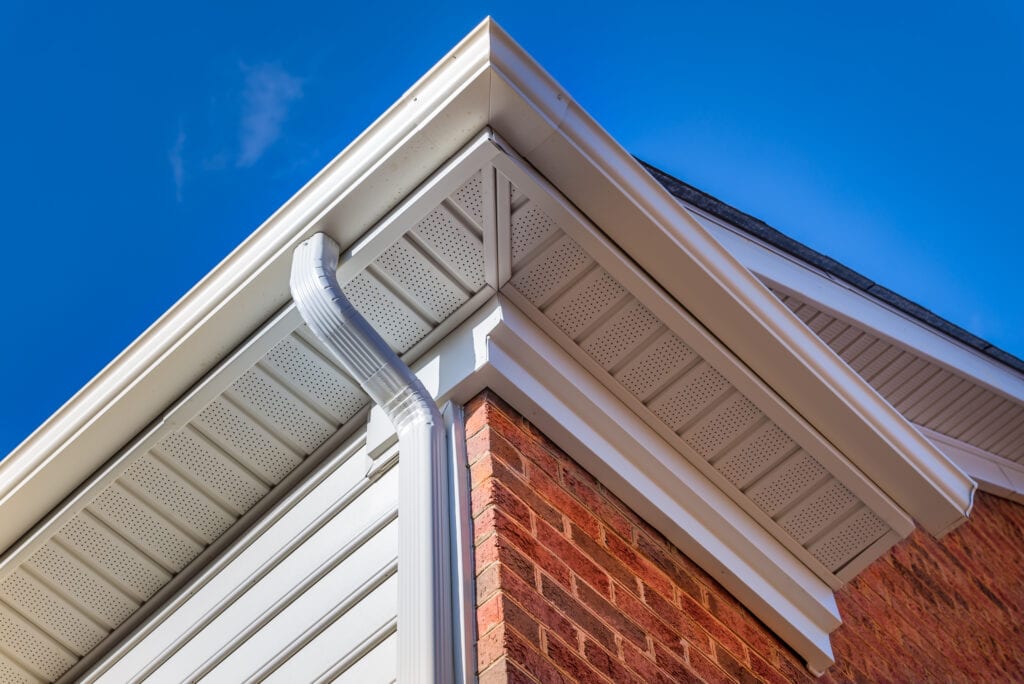
A soffit is essentially the underside of a roof and is a safe place to direct bathroom exhaust air to be released outside. Venting through a soffit is advantageous because it is easy to install and reduces the chances of furniture deterioration in your attic.
Soffit works particularly great in areas that are frequently bombarded by heavy snow because they are less likely to be affected by snow than roof vents. They are also suitable for situations where accessing your roof is nearly impossible or you don’t have the time to access your roof to unblock the vents. You need only have access to your attic to install the soffit. To install the soffit, fan, and other required materials by yourself, you need about $300 to $500.
Unfortunately, installing a soffit vent for the bathroom fan is prohibited in some countries, so you should consult your local authority before installing one.
2. Venting Through the Wall
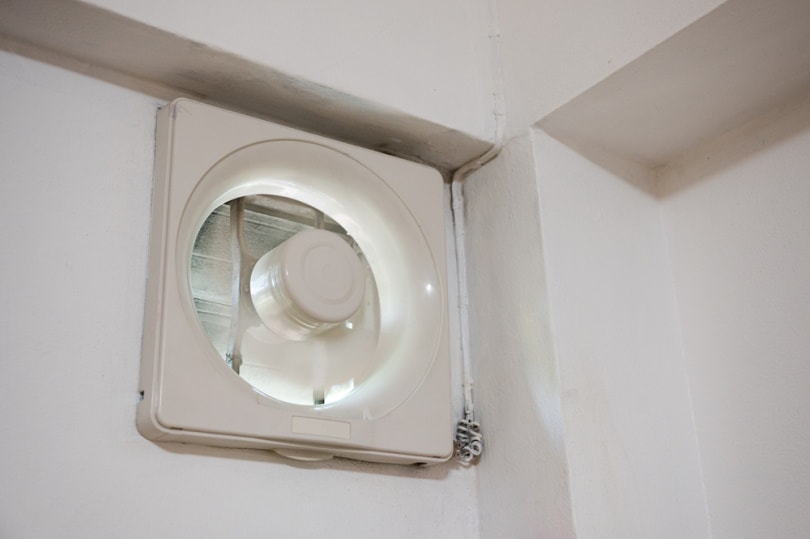
Just like you would install a soffit, you can also install air vents through your wall. However, this option is not popular among homeowners because you need additional installation work. To get rid of the moisture-rich bathroom air, simply create a duct that goes back to your bathroom via your garage or attic wall.
The main concern about venting through the wall is the fact that it might affect your frame and house insulation, hence, the additional workload. Moreover, this method heavily relies on ductwork, which can also affect the ventilation inside your home. If you think this method would work for you, you should budget at least $400 to $700 for the installation package.
3. Venting Through the Roof Gable
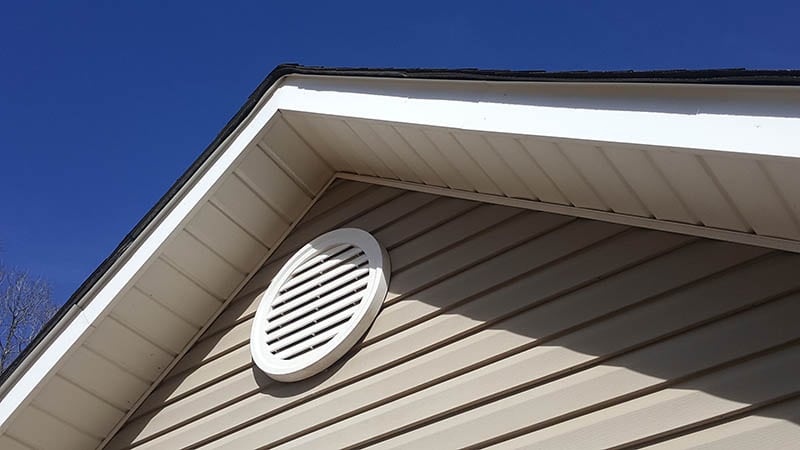
This is a popular choice for most homes in the US because it gives one the chance to vent the bathroom air outside through the ceiling. This method is also easy to install and improves your bathroom’s ventilation. However, it presents an issue.
If you live in a region affected by heavy snowfall, it might prove redundant because the snow will clog and block your roof vent. Moreover, you might have to climb to the roof during installation, which is a herculean task, especially for those with a height phobia.
To vent a bathroom fan via the roof gable, you need about the same amount you would need to install a soffit, $300–$500.
The 4 Factors to Consider When Venting a Bathroom Fan Through the Attic
1. Climate Considerations
Before installing any kind of ventilation in your house, it is important to consider the climate of your residential area. If you live in predominantly humid areas, the high humidity content will be an important factor for your ventilation installation.
High humidity usually requires the installation of a larger fan with more ductwork heading outside. On the other hand, if you live in cold areas with dry air, ensure that your house is properly ventilated. This is because you could end up experiencing shortness of breath or coughing.
2. Location of the Bathroom
The position of your bathroom plays a significant role in vent installation. For instance, it would be pointless to vent a bathroom located in your basement through the roof. The moist air will have to travel through your main floor, increasing the chances of having a foul smell inside your living room area.
To be more efficient, ensure that your ductwork travels the shortest possible distance before releasing exhaust air outside. So, the position of your bathroom will heavily influence the best place to direct the vent.
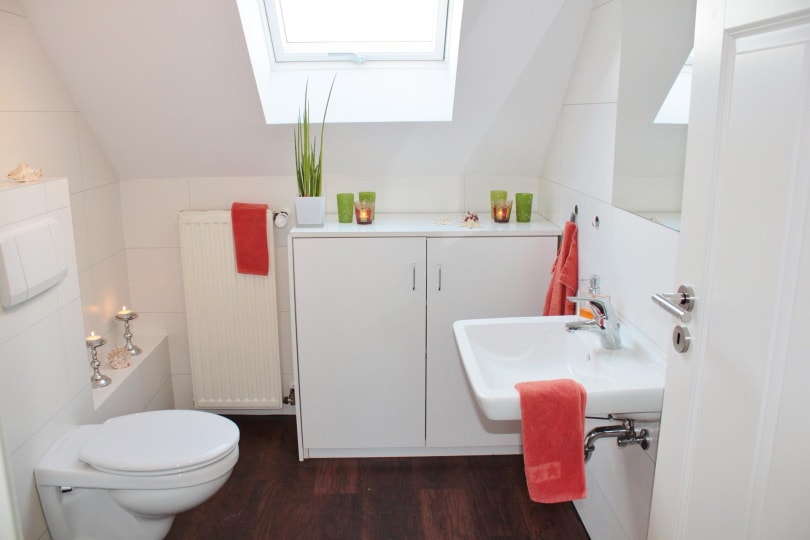
3. Using the Right Fan Size
Bathroom fans retail in a variety of shapes and sizes. Usually, you can get high-quality and efficient bathroom fans at a cost ranging from $30 to $300. Yet, the cost shouldn’t be your only consideration when purchasing one. Generally, there are three categories of fans that you can install in your bathroom: wall-mounted, inline, or remote, and ceiling-mounted bathroom fans. Your choice will depend on the location you are venting bathroom air.
4. Backdraft Dampers
Backdrafts are an important consideration because they are usually installed in the ductwork to allow air to flow outwards while preventing the moist air from flowing back into your house. Dampers also play a vital role in situations where you will be using long ductwork with multiple connecting vents. Backdraft dampers are also ideal if you live in a windy area.
Conclusion
While it is possible to vent the bathroom fan into the attic, it is not recommended. First, it goes against many local building codes and regulations and increases the chances of mold and mildew formation. Moreover, you risk the moist air destroying furniture in your attic as well as giving your home a foul smell.
Fortunately, you can avoid paying fines by properly directing the exhaust air from inside your home to the exterior. You could opt to install a soffit or vent through the wall or the roof gable. However, your choice will depend on climate considerations, the location of your bathroom, or using the right fan and backdraft dampers.
Before making any roofing upgrades, it is best to consult roofing contractors to get the necessary information before installing any exhaust vents. They will be able to perform a thorough inspection to find out exactly what you will need before installing a vent for your bathroom exhaust fan.
Featured Image Credit: Siam SK, Shutterstock
Contents

